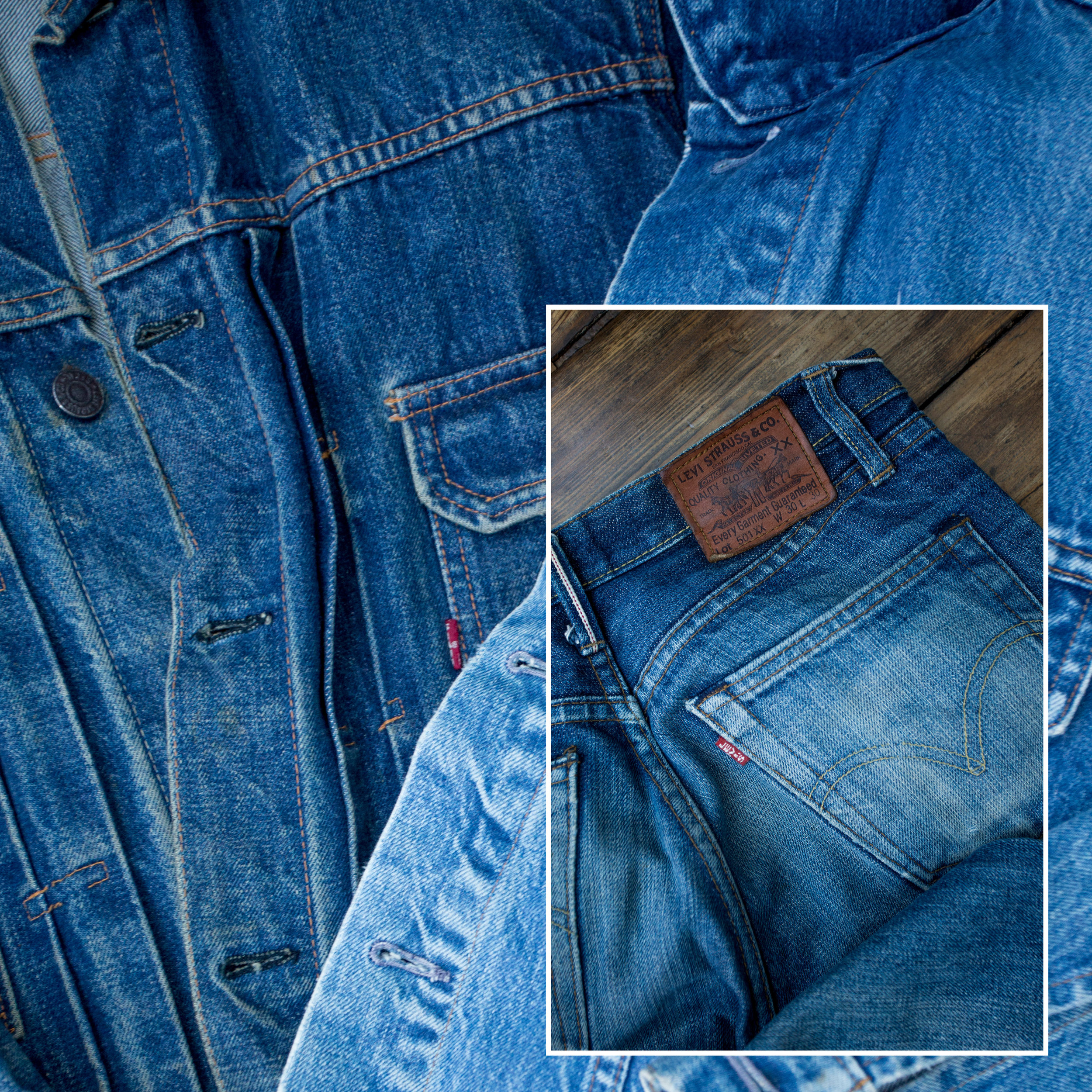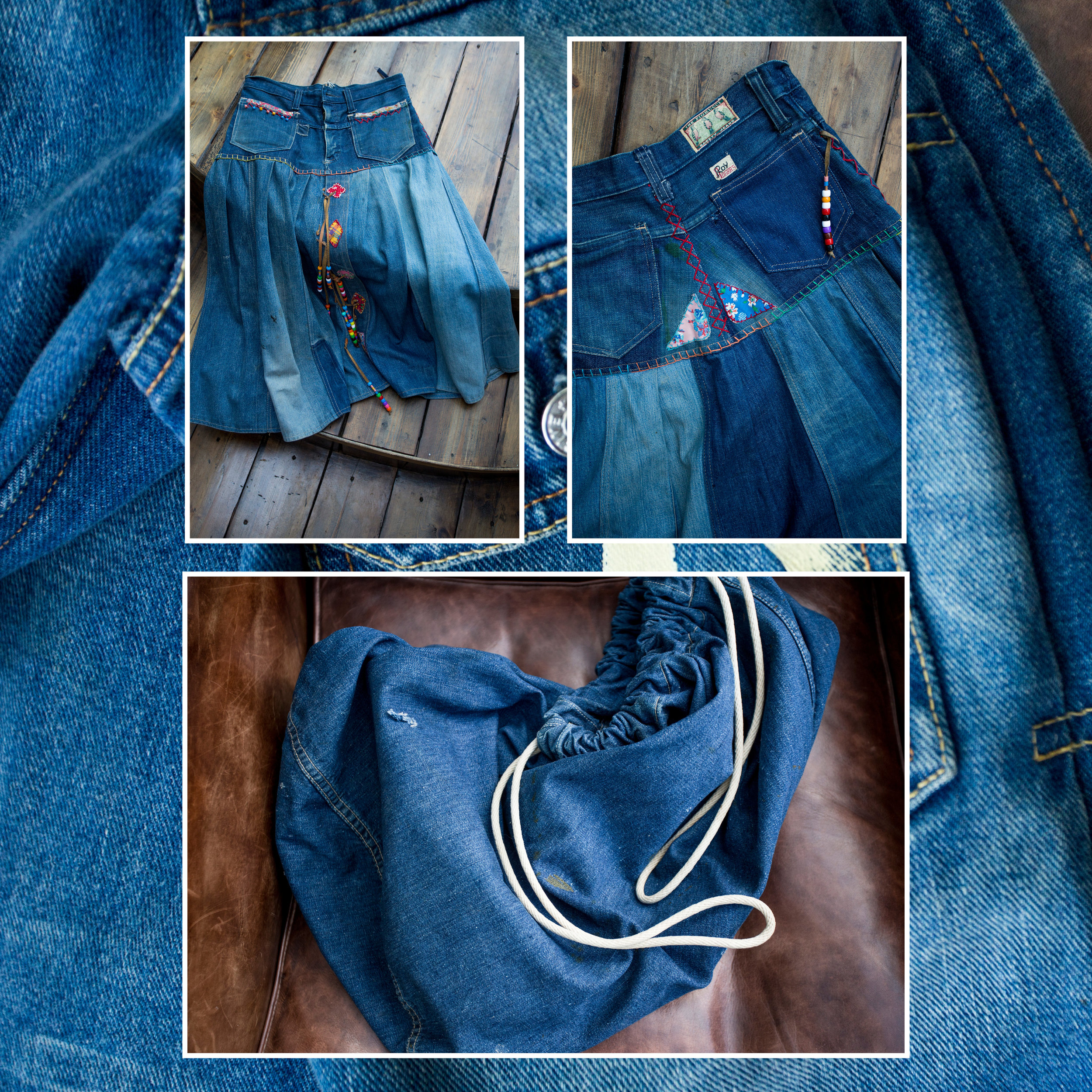Vintage is and has been the driver for denim fabric and jeans ever since the middle of last century. It took a long time for denim jeans to break free from the original work ethic garments to become something more stylish. However, it was and is the fabric that earned the name vintage in the beginning combined with the accessory detailing.
Since then all jeans brands have emulated the "vintage " look by replicating the old shade and fabric character as well as the garment details. Some more renowned than others. The simplest way of emulation is of course in the laundry - replicating the worn out appearance with complex laundry techniques.
PRPS jeans here demonstrate their successful attempts at not only washing their jeans in a most authentic way but also using fabric from Japan. The denim in the early incarnation of the brand was woven in Japan from cotton dyed with natural indigo dyes. Difficult to find and difficult to process. Natural indigo's adherence to the cotton as host is not permanent so the wash down became easy to replicate the vintage appeal. The first fabric was an amazing natural cross hatch heavy weight denim for men which as it washed down became better and better. The indigo lifting off the reveal the old style construction.
This Old Japanese kimono re-worked demonstrates the combo of fragile indigo striped cotton and denim gauze. This item is almost impossible to wear being too fragile. But i occasionally succumb to temptation however, its better to hang as display. Still in Japan the Evisu jeans brand has become iconic. Less popular here in Europe than in Asia. I love the tongue in cheek take off of the Levi name and logo. After ( i believe) unsuccessful court cases it thankfully still exists. Super creative yet staying true to the vintage ethic both denim and accessories in the Evisu collection are vintage replicas whilst the shape is more modern to fit what our bodies and lifestyles have become.
Levi Capital E items both jacket and jeans seen here, can still be found if you are lucky enough but at a seriously high price. They are now collectors items. So when you wear them don't leave them at the coat check.
The iconic details is what we love the garment for: front tucking; Capital E on the tag; ring ring old yarn denim; seam puckering and mottled denim surface; red selvedge seams and pocket details. And of course still being able to wear a pair of jeans or jacket that is maybe 100 years old!
The natural worn in worn out effects in the Cap E jean makes them especially lovely to wear. Even if the wear creases and rips are in the shape of the previous owner!
You can see here the superb old denim fabric, slightly crinkling with age and constant washing and seam pucker details with the front tucking that make such a garment a true icon.
My Fiorucci skirt is a really old favourite. Made from even older distressed and recycled denim panels, revived with plastic and ceramic craft beading. The piecing and patching of pre-worn jeans pieces helps to create the romance enhancing its desirability. Made in the 1960's yet it is just as relevant today.
Re-worked vintage denim jacket. Creative licence has been taken in re-working such and old piece. Even though the appliqué and embroidery are of now as is the sleeve fringing the result is a grand replica of western decorated denims. And it fits!





















